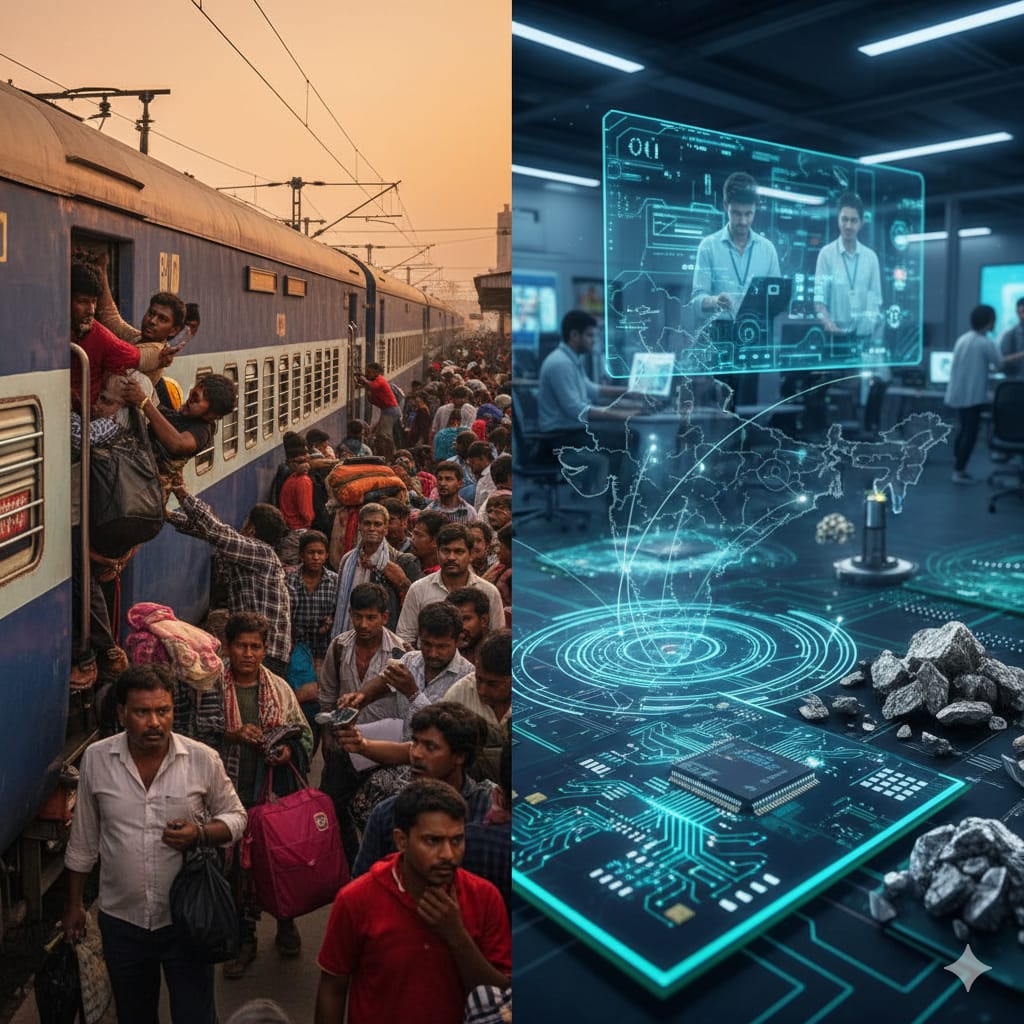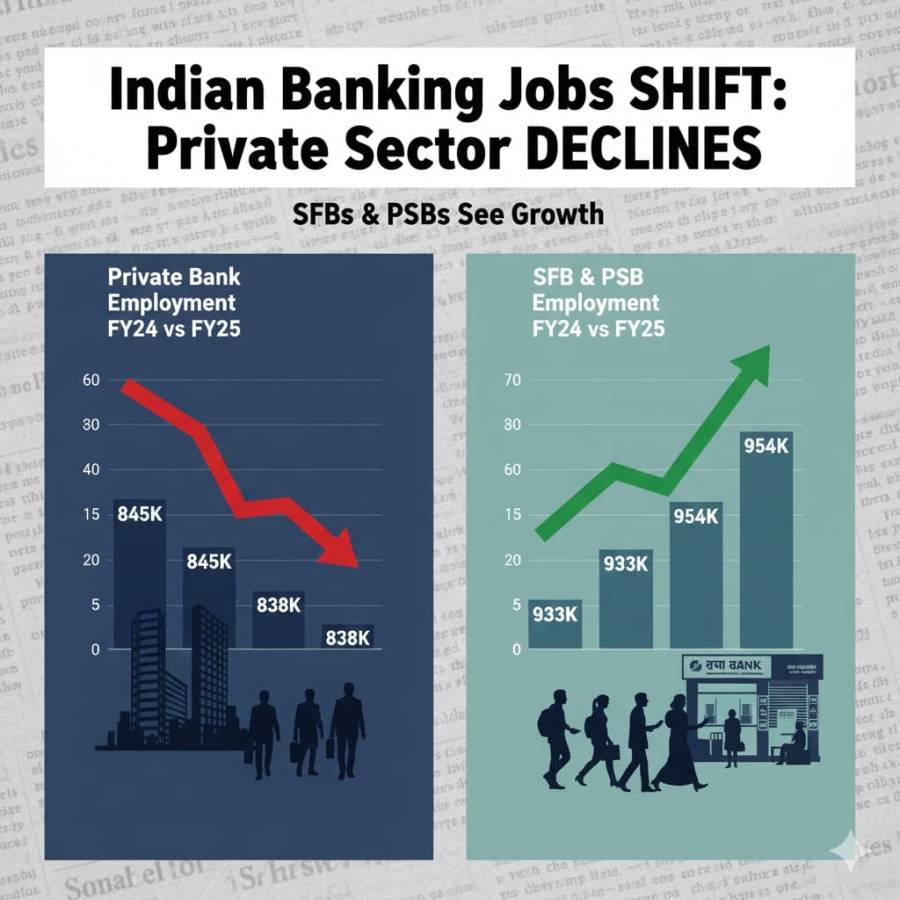
Seven new trains for Bihar, including the Amrit Bharat Express and additional coaches for the annual Chhath and Diwali rush, were announced recently. The applause was instant, predictable, and hollow. Bihar has been so long deprived of infrastructure that even crumbs are celebrated as banquets. Yet this apparent victory is no triumph. It is the politics of palliative. It soothes a wound that remains open, a wound created by decades of economic neglect.
The contrast with the larger world could not be starker. Across continents, nations compete for rare earth minerals, the lifeblood of clean energy, defence technology, and artificial intelligence. Global investment in AI crossed 250 billion dollars last year. Presidents and prime ministers speak of the Fourth Industrial Revolution with urgency. Bihar, meanwhile, marks its progress by multiplying the routes of exit for its people. The world is building the future. Bihar is perfecting the logistics of departure.
The Diaspora Express
The new trains are not corridors of commerce. They are corridors of escape. They do not carry investment or technical expertise into the state. Their purpose is to ferry Bihar’s people out, to construction sites in the South, to factories in the West, and to menial jobs across the country. These are not trains of opportunity, but trains of exile.
Bihar remains the largest source of migrant labour in India. Its per capita GSDP is ₹66,828, barely a third of the national average. This single figure encapsulates decades of stagnation and decay. The freight equalisation policy of the past robbed Bihar of industrial advantage. Successive governments failed to attract new investment. The state’s youth, robbed of opportunity, found salvation only in migration.
A “Chhath special” train is, therefore, not a symbol of cultural pride. It is a poignant reminder of separation. Families torn apart by poverty are allowed a brief reunion before the migrant must return to his distant post of survival. When the crowning achievement of politics is measured by how many trains carry away the young, the failure is not accidental but institutionalised.
The Shadow of Ambition
The world is at war for lithium and cobalt, minerals that power electric vehicles, smartphones, and defence technology. Countries deploy AI-driven surveys and drone mapping to secure these resources. In Delhi, speeches are filled with the rhetoric of self-reliance in critical minerals. In Patna, speeches are filled with gratitude for new train coaches.
Once, Bihar was the industrial hope of the Ganga plain. Sugar mills hummed, fertiliser plants flourished, and the state was self-sufficient in food production. Today, most factories are shut, roads remain deplorable, and electricity is erratic. Investors avoid Bihar because basic infrastructure is unreliable. The state has slipped into a tragic anachronism. Where others chase silicon and semiconductors, Bihar celebrates steel tracks and train whistles.
The Dangerous Comfort of Trains
The celebration of a few trains is a dangerous comfort. It allows politicians to claim progress without confronting failure. The trains treat the symptom, not the disease. They ease the pain of migration by making it smoother, but they do nothing to prevent the migration itself. Where are the new industrial clusters? Where are the value-added processing units? Why are remittances from migrants spent on mere consumption and not redirected into productive investment? These are the questions left unanswered.
The True Test of Development
The measure of development is not the ease of exit but the magnet of return. Bihar will have achieved true success when trains run full towards Patna, Darbhanga, and Purnea, carrying back skilled workers, entrepreneurs, and investors. Progress will be real when the diaspora returns not for festivals but for opportunities at home.
Until then, the applause for new trains is bittersweet. It is the cheer of a people consoled by movement, even when the movement is away from home. The trains are a mercy, but they are also reminders of failure. Bihar’s future continues to leave on time, bound for distant states, while its present waits helplessly on the platform.





















